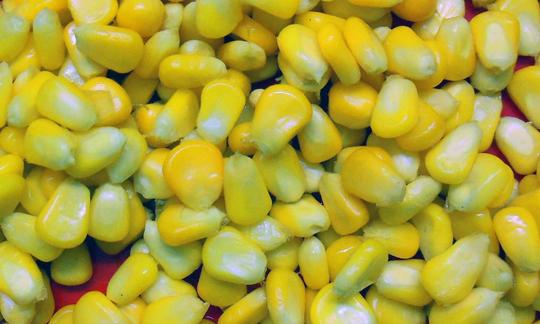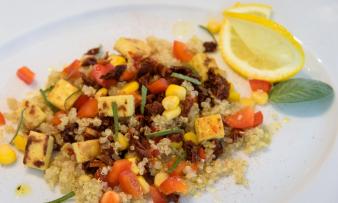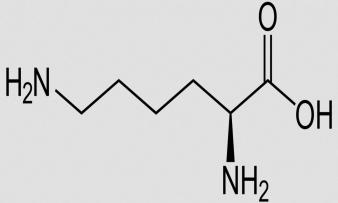Table of contents
The sweet corn kernel, yellow, preserved, can be prepared quickly and easily in the kitchen because it is pre-cooked. Whether cold or warm, the sweet corn ( organic) tastes good in many dishes and is also gluten-free.
Using preserved sweetcorn kernels in the kitchen:
Preserved yellow sweetcorn kernels are actually a grain, but the yellow kernels are used more like a vegetable in the kitchen. Many people value the pre-cooked kernels because of their long shelf life and quick handling. The preserved, yellow sweetcorn kernels can be used in a variety of dishes, just like raw corn kernels. How can you prepare cooked sweetcorn or how can you process sweetcorn? Preserved corn kernels are used in soups, salads, vegan chili sin carne, vegetable stir-fries, gratins, casseroles or tacos. As a side dish, sweetcorn goes well with vegetables such as potatoes, tomatoes, carrots, pulses and much more. The sweet taste of the corn kernels is often complemented with hot spices such as chili powder or cayenne pepper. Recipes for fried sweetcorn, corn as a spread or cornbread can also be found.
To prepare canned corn, you should rinse the yellow kernels with tap water before further processing and then drain them because additives (eg sugar or salt) are added to the yellow sweet corn during production. Do you have to cook corn from a can? Since sweet corn is pre-cooked, you can use the sweet corn kernels without re-cooking them. Alternatively, you can warm up the pre-cooked corn briefly in the microwave.
Vegan recipe for one-pot pasta with sweet corn:
Ingredients (for 4 people): 1 l vegetable stock (organic), 1 can of sweet corn kernels, yellow, preserved, 400 g wholemeal pasta (vegan), 200 g zucchini (organic), 125 ml oat cream (vegan), 1 onion, 2 cloves of garlic, ½ organic lemon, 2 tbsp rapeseed oil, 1 tsp agave syrup, a handful of fresh basil, ½ tsp blackpepper, ¼ tsp salt.
Preparation: First, rinse the sweet corn thoroughly and drain well. Now wash and dry the lemon. Grate the peel and squeeze the juice from half a lemon. Peel the onion and garlic and chop both finely. Wash, clean and quarter the zucchini, then cut into slices. Wash the basil, pluck off the leaves and chop them finely. Heat oil in a pan, add the prepared vegetables and sauté for 5 minutes. Season the vegetables with salt, pepper and agave syrup and add the vegan cream and vegetable stock. Now add the pasta. Cook the sauce with the pre-cooked corn until bubbles form, then simmer for 12-15 minutes on a medium heat. Finally, season the vegan one-pot pasta with the grated lemon peel, lemon juice, salt and pepper and stir in the basil.
Vegan canned corn recipes or vegan recipes with canned corn can be found under the note: " Recipes that have the most of this ingredient ".
| Not only vegans or vegetarians should read this: Vegans often eat unhealthily. Avoidable nutritional errors. |
Shopping - where to buy?
Canned corn is available all year round in supermarkets and major retailers such as Coop, Migros, Denner, Volg, Spar, Aldi, Lidl, Rewe, Edeka, Hofer etc. Preserved sweet corn can also be found in jars in some supermarkets, e.g. Migros and Edeka. However, corn can be preserved not only in cans or jars, fresh sweet corn kernels can also be frozen. Frozen corn kernels can be found in, for example, Interspar, Migros and Edeka. Preserved sweet corn is even available in organic quality in some supermarkets. Preserved yellow organic sweet corn kernels can be found in health food stores, organic shops, organic supermarkets (such as Denn's Biomarkt, Alnatura) or online.
Storage:
How long does corn last? Yellow, pre-cooked sweet corn kernels usually have a shelf life of 18 months after bottling. 1 Often, the hermetically sealed kernels can even last for several years. Check from time to time whether the canned goods are swelling or dented, as this can lead to the ingress of oxygen and microorganisms that spoil the sweet corn. Use opened canned corn or corn from jars within a few days. If there is some sweet corn left in the opened can, fill the kernels into a sealable storage container, preferably made of glass. The reason: the inside of the can is coated with a protective coating. Opening the can or accidentally scratching the inside of the can with a fork, for example, damages the protective coating and tin can come loose from the can material and become deposited in the corn kernel. Tin can put a strain on the kidneys in large quantities. Although the risk is very low, it is still advisable to transfer the sweetcorn kernels to an alternative container as a precautionary measure. The shelf life of frozen sweetcorn kernels is up to 8 months in the freezer. 2
Ingredients - nutritional values - calories:
What are the nutritional values of sweet corn? 100 g of preserved yellow sweet corn kernels contain 13 g of carbohydrates and have an energy content of 74 kcal. The sugar content of sweet corn is 4.1 g/100g. Canned corn is rather low in fiber with 1.7 g of fiber and has a low fat content (1.4 g). The 2.2 g of protein contained in preserved sweet corn kernels can be compared to the content in raw shallots. The pseudocereal amaranth is significantly richer in protein (14.1 g). Since sweet corn lacks essential amino acids, the protein in corn kernels is of unsatisfactory quality. To ensure a sufficient supply of amino acids, pulses and sunflower seeds can be combined with corn. 3
Canned corn contains 163 mg/100g of sodium, which is 20% of the daily requirement. Cumin and seeds contain a similar amount. Canned capers contain significantly more sodium, at 2,348 mg/100g. 3
Does canned corn contain vitamins? Canned sweet corn hardly contains any vitamins. The highest vitamin content is folate (also folic acid, vitamin B9, vitamin B11). The proportion of the vitamin accounts for around 15% of the daily requirement when consuming 100 g of canned yellow sweet corn kernels (and a daily intake of around 2000 kcal). The content of 29 µg/100g can be compared with raw buckwheat. Ripe mung bean seeds (625 µg/100g) and raw chickpeas (557 mg/100g) have a high folate content. 3
The 0.2 g of lysine contained in 100 g covers 11% of the daily human requirement. Raw millet and white rice flour have a comparable proportion. The content is significantly higher in ripe soybean seeds (2.7 g/100g). 3
The complete ingredients of sweet corn kernels, yellow, preserved, the coverage of the daily requirement and comparison values with other ingredients can be found in our nutrient tables. In the article Nutrients explained you will get a detailed insight into the topic.
Health aspects - effects:
Is canned corn healthy? Cooked and preserved sweetcorn kernels contain fewer nutrients than fresh corn kernels, but a short cooking process during production means that some minerals and vitamins are retained in the corn. Among other things, sweetcorn contains beta-carotene (provitamin A) 4, which the body converts into vitamin A. The vitamin plays an important role in the vision process and in the health of tissue. However, canned corn loses 25% of its provitamin A content per year. The older the can of corn, the more nutrients are lost. The orange-yellow pigment zeaxanthin is also contained in corn kernels. Together with lutein, which is also a component of the yellow kernels, zeaxanthin supports eye health by absorbing blue light. 5 The two carotenoids also act as antioxidants and can neutralize free radicals.
Pre-cooked sweet corn is gluten-free, so people with gluten intolerance can eat it without any concerns. 6 Due to its diuretic effect, canned corn can provide relief for chronic kidney disease. Eating corn is also recommended for people who are gaining weight or have an overactive thyroid, due to its slightly inhibitory effect on metabolism and the thyroid. 7
Dangers - intolerances - side effects:
The chemical compound bisphenol A has been found in some canned foods. Bisphenol A acts as a starting material for the production of epoxy resins. The synthetic resins serve as corrosion protection in the cans. Although there is no need to fear acute damage to health, the health risk can increase with frequent consumption of canned products. In humans, bisphenol A leads to infertility, precocious puberty, hormone-dependent tumors such as breast and prostate cancer, and various metabolic disorders. 8 Tin can also pass into the corn kernels if the protective layer is damaged. If there is a high concentration of tin in food, symptoms of poisoning can occur. 9
People who suffer from diabetes should only consume canned corn occasionally and in small amounts, as cooked corn has a glycemic index of 70, which is quite high. 10 A high value means that after consumption, blood sugar levels rise rapidly and so do insulin levels. This is also harmful for healthy people in the long term, as a constant, rapid rise in blood sugar increases the risk of insulin resistance and diabetes.
A one-sided diet with corn products can lead to the vitamin deficiency disease pellagra. Particularly in countries where corn is a staple food, such as some African countries, a niacin deficiency can occur, as corn contains hardly any vitamin B3 (niacin) and the niacin present in corn cannot be used by the body. The disease manifests itself in itching, reddening of the skin, inflammation of the mucous membranes of the digestive tract, painful thickening of the skin and damage to the central nervous system. 11
For some people who suffer from a rare corn allergy or a cross allergy, eating corn kernels can cause problems. The kernels can trigger reactions such as headaches, nausea, diarrhea, reddening of the skin, swelling of the mucous membranes, breathing difficulties or circulatory collapse, so those affected should avoid eating products containing corn. Cross allergies to grasses such as wheat, rye, ryegrass or oats are also possible. In a cross allergy, the immune system reacts oversensitively to the same or similar allergens in different foods. An allergy to wheat, for example, can therefore trigger a cross allergy to corn. 12
Occurrence - Origin:
Yellow corn ( Zea mays L.) belongs to the grass family (Poaceae) and originally comes from Central America. The corn plant came to Europe through Columbus. Sweet corn only emerged in the middle of the 19th century. Corn is now grown worldwide in tropical and temperate zones. The 13 main growing countries are the USA, China, Brazil, Mexico, France, South Africa and India.
Ecological aspects:
Sweet corn is not only grown as food, but also often as animal feed and energy crop. The demand for corn is accordingly high. Extreme monocultures, high pesticide use and the cultivation of controversial genetically modified corn are the result. You can find more information on the subject of genetically modified corn in the article Corn kernel, yellow. 14
Industrial production:
How does the corn get into the can? When making canned corn, the ripe sweet corn cobs are processed immediately after harvesting so that the vegetables stay as fresh as possible and few nutrients are lost. The corn is ready for harvesting when its kernels have the highest sugar content. After harvesting, the corn is cleaned, gutted and blanched before being canned. The corn cans are filled with water, salt and/or sugar to further preserve the corn. The cans are then sealed airtight to protect the contents from light and oxygen. This is followed by pasteurization, in which the cans are briefly heated to 60-90 °C to kill any remaining germs. This allows the corn to be preserved. The loss of vitamins in the corn kernels depends on the length of the pasteurization. The longer it takes, the more nutrients such as vitamin C or B vitamins are lost. If heated for too long, vitamin losses of 40-65% are threatened. 15, 1
How can you preserve sweet corn? You can also freeze sweet corn directly after harvesting. To do this, you use the IQF method, also known as the "individually quick-frozen method". In this method, the corn kernels are not frozen together to form a block, but the individual kernels remain separate. When preserving corn on the cob, you have to do it quickly, as the kernels quickly lose quality after harvesting. After the harvested cobs have been cored and cleaned, the corn from the field must be boiled or briefly blanched. The individual corn kernels are transported to the shock freezer using a conveyor belt, which freezes them as quickly as possible. The faster something freezes, the smaller the ice crystals that form in the food. When frozen slowly, larger ice crystals form, which damage the fibers in the corn, causing it to appear limp and take on a "mushy" consistency after thawing. 16, 17
General information:
The tin can was developed around 200 years ago. Napoleon also played a role in the development of preserved food. As he was looking for a way to feed his soldiers during the war, Napoleon launched a competition in which he offered prize money for preserving food. The Frenchman Nicolas Appert finally succeeded in inventing sterilization. He cooked the food, filled it into bottles and sealed it airtight using a cork and wire. The Briton Peter Duran used Appert's process, but optimized the packaging. In August 1810 he applied for a patent for the tin can. 18
Alternative names:
Sweet corn kernels, yellow, preserved, (corn from a can) are known in English as sweet corn, canned, or sweet corn kernels, canned, or canned sweet corn. The term for frozen corn is frozen corn.
Bibliography - 17 Sources
| 1. | Lebensmittel-warenkunde.de. Mais in Dosen. |
| 2. | T-online.de. Diese Fehler sollten Sie mit Konservendosen nicht machen. 2020. |
| 3. | USDA United States Department of Agriculture. |
| 4. | Muzhingi T, Yeum K-J, Russell RM, Johnson EJ, Qin J, Tang G. Determination of carotenoids in yellow maize, the effects of saponification and food preparations. Int J Vitam Nutr Res. Mai 2008;78(3):112–20. |
| 5. | Abdel-Aal E-SM, Akhtar H, Zaheer K, Ali R. Dietary sources of lutein and zeaxanthin carotenoids and their role in eye health. Nutrients. 9. April 2013;5(4):1169–85. |
| 6. | Rai S, Kaur A, Chopra CS. Gluten-free products for celiac susceptible people. Front Nutr. 2018;5:116. |
| 7. | Roger P. Heilkräfte der Natur: Ein Praxishandbuch.3. Zürich: Advent Verlag. 2006. |
| 8. | Konieczna A, Rutkowska A, Rachoń D. Health risk of exposure to Bisphenol A (Bpa). Rocz Panstw Zakl Hig. 2015;66(1):5–11. |
| 9. | Wehrmed.de. Zinn in Lebensmitteln aus Konservendosen. 2019. |
| 10. | Diabetes-austria.com. Glykaemischer Index. |
| 11. | Carpenter KJ. The relationship of pellagra to corn and the low availability of niacin in cereals. Experientia Suppl. 1983;44:197-222. |
| 12. | Allergiefreie-allergiker.de. Maisallergie. |
| 13. | Rehm S, Espig G. Die Kulturpflanzen der Tropen und Subtropen. Stuttgart:Verlag Eugen Ulmer; 1976. ISBN3-8001-4108-6. |
| 14. | Pini U. Das Bio-Food-Handbuch. Ullmann: Hamburg, Potsdam. 2014. |
| 15. | Kochbar.de. Dosengemüse: Wie gesund ist Gemüse aus Konserven?. |
| 16. | Britannica.com. Canning and Freezing. |
| 18. | Stern.de. Napoleon, Krieg und Blech: Wie der Feldherr die Erfindung der Konservendose vorantrieb. |









Comments